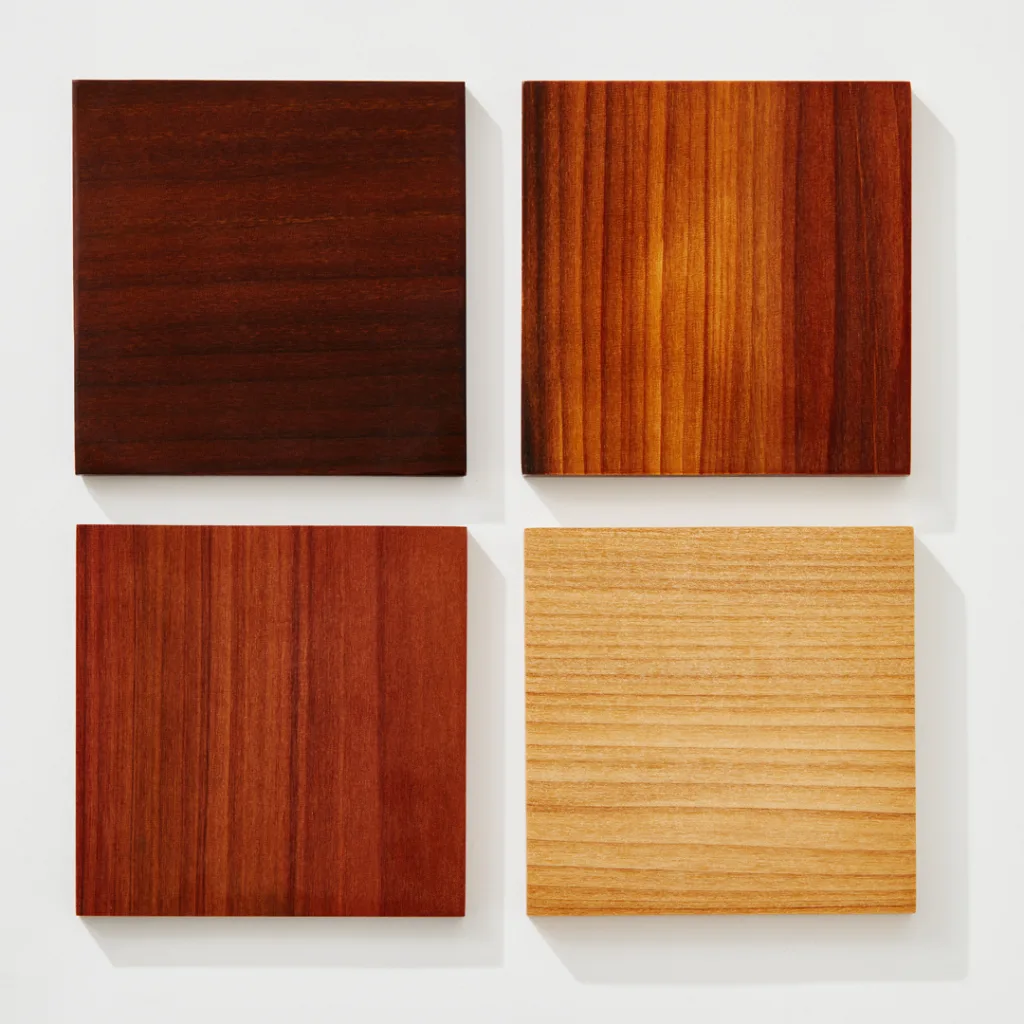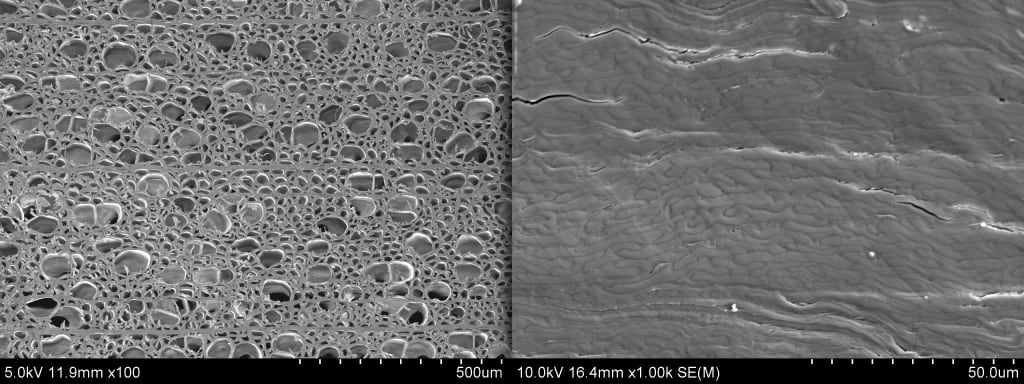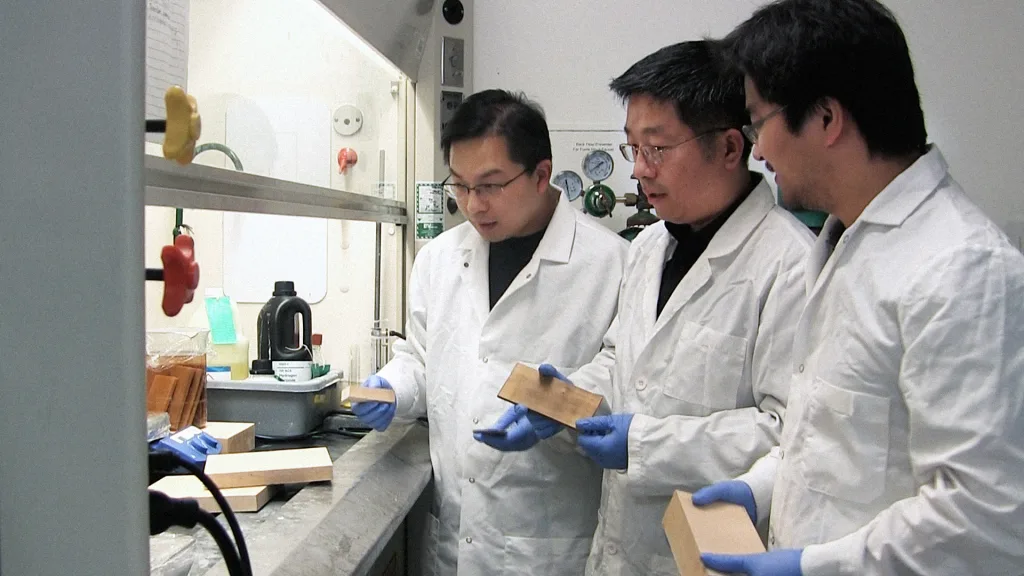This ‘Superwood’ is stronger than steel. It’s coming to a building near you

Steel has long anchored modern construction, but its environmental toll is staggering: producing a single ton emits nearly two tons of CO2. Steel is also complex to manage in construction processes, which prevents smaller contractors and projects from using it.
A material invented at the University of Maryland will soon offer a radical alternative. Called Superwood, it has a 50% greater tensile strength than steel and a strength-to-weight ratio that’s 10 times better. It’s lighter, tougher, and also locks away carbon. After seven years of development, the startup commercializing the technology will begin mass production this summer.
“We’ve spent years perfecting our molecular reconfiguration process to maintain the extraordinary properties demonstrated in the lab, while making the process commercially viable,” Alex Lau—cofounder and executive chairman of InventWood—tells me over email.

The company was founded in 2016 by Dr. Liangbing Hu at the University of Maryland, after he developed the first transparent wood as a better insulating alternative to glass. “What began as pioneering academic work evolved through several breakthrough iterations,” Lau says. Hu turned his research into Superwood in 2017. The work was documented in a 2018 Nature paper that revealed a method of transforming ordinary wood into a substance rivaling titanium alloys. The discovery held the promise of a sustainable, CO2 negative construction material that was better than steel, but it was far from commercialization.
During this time, Dr. Hu focused on further refining the technology and bringing manufacturing costs down. Then, in 2021, Lau recognized that the technology had reached sufficient maturity for full-scale commercialization. “At that point, I helped pull together a complete team to kick off the manufacturing process,” he says. “Since 2021, we’ve been intensely focused on creating a scalable process and ensuring the quality standards necessary to bring SuperWood to market.”

How Superwood is made
Making Superwood is a complex process, but it requires two primary steps. First, lignin—a polymer that stiffens wood and gives it its brown hue—is partially dissolved using food-grade chemicals. As Orlando J. Rojas, a professor at Finland’s Aalto University, noted back when the discovery came out in 2018, the trick is to remove just enough lignin to maximize hydrogen bonding between cellulose fibers without compromising its structural integrity. Next, the wood is compressed at 150°F, collapsing its cellular structure into a dense matrix. The result is a material five times thinner than the original, but 12 times stronger and 10 times tougher.
This molecular reconfiguration eliminates wood’s inherent weaknesses. Natural wood is porous and prone to rot, but Superwood’s tightly packed cellulose fibers create a barrier against moisture, termites, and fungi. Its Class A fire rating—achieved without chemical flame retardants—stems from its density, which starves flames of oxygen. Lab tests proved its ballistic resistance: A projectile pierced untreated wood, but it lodged halfway through a same-thickness Superwood block. Unlike steel or carbon fiber, it requires no energy-intensive smelting or synthetic resins.
Initially, it took weeks to make a single plank of Superwood, but Inventwood’s team streamlined the process to just a few hours, enabling bulk production of the material.
Lau tells me that the company’s first facility in Frederick, Maryland, will produce one million square feet of Superwood annually starting this summer, focusing initially on interior finishes for commercial and high-end residential projects. A second phase in fall 2025 will introduce exterior-grade panels for siding and roofing. He envisions structural beams and columns within a few years, pending certification. Their plan is to build “a larger facility that will scale to over 30 million square feet, enabling use in infrastructure and large developments,” Lau says.
If you are wondering about how architects and crews can actually use this to build, you are not alone: If it’s stronger than steel, does it require special tools? According to Lau, contractors can cut, drill, and fasten Superwood with standard woodworking tools, though its density may demand adjusted techniques. “No specialized tools are required, making adoption straightforward,” Lau says. The material’s stability minimizes warping, and polymer coatings enable outdoor use without sacrificing aesthetics. Its compressed fibers deepen natural grain patterns, yielding finishes akin to tropical hardwoods.

It can change everything
Lau didn’t disclose information about price, thought he did say Superwood’s initial pricing will be “premium” but competitive with top-notch tropical hardwoods and hybrid woods, which are composite materials that combine wood with other materials like steel or concrete. This means that, pound by pound, it will be much more expensive than steel at this point, more than 10 times in fact: $12.50 to $25 per pound for Superwood as opposed to steel’s $1 to $2 per pound.
But then you need to factor in other factors to understand its true cost. If Superwood’s offers 10x superior strength-to-weight ratio, a 10-pound beam could match the load-bearing capacity of a 100-pound steel beam, in theory effectively reducing its effective cost to $1.25 to $2.50 per pound when adjusted for performance.

You also need to factor in its resistance to corrosion and rot, plus the fact that you can make a building entirely out of Superwood and eliminate the need for other structural elements and wall materials. Then there’s the economical and environmental cost of fire retardants, since the material naturally retards fire even if it’s wood. Since wood comes from the most effective living carbon sequestration system on the planet—trees!—it will actually suck CO2 out of the atmosphere (the material is made from wood from sustainable tree farms).
Clearly, Superwood’s long-term value proposition narrows the gap with steel in relative and absolute terms. The company expects to achieve better economics as they scale up production too, Lau adds.
Superwood, in theory, could extend beyond construction. Early research proposed applications in vehicles, aircraft, and furniture, leveraging its moldability and cost savings over carbon fiber. For now, InventWood is focused on buildings, however, where steel and concrete account for a massive carbon footprint, pollution, and economic bill. “We want to get to the bones of the building,” Lau says. He believes that Superwood can transform the construction industry. We will see when the first batches roll out this summer and companies start using them.
What's Your Reaction?
 Like
0
Like
0
 Dislike
0
Dislike
0
 Love
0
Love
0
 Funny
0
Funny
0
 Angry
0
Angry
0
 Sad
0
Sad
0
 Wow
0
Wow
0










.jpg)





















































































